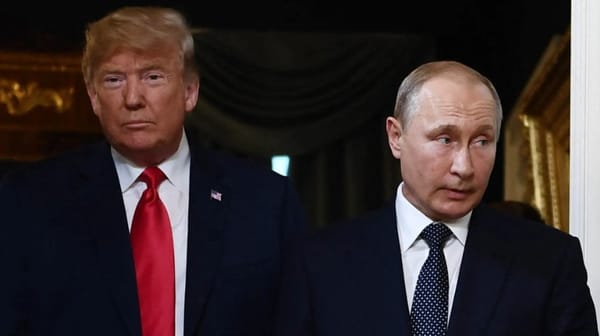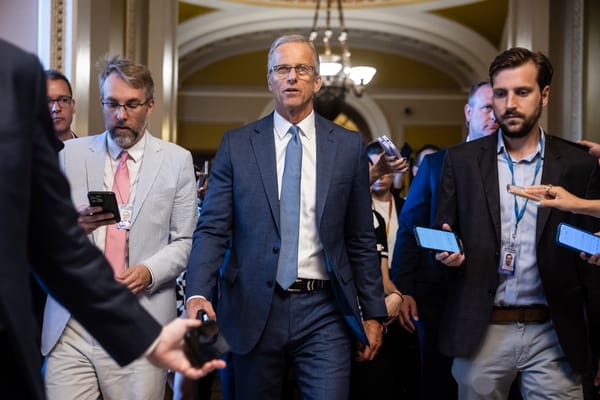Wisconsin Supreme Court Race: A National Battleground for Political Power

The Wisconsin Supreme Court election, set for Tuesday, April 1, 2025, has become a high-stakes contest that has drawn national attention and unprecedented levels of funding. The race pits conservative Waukesha County Judge Brad Schimel against liberal Dane County Judge Susan Crawford in a battle that will determine the ideological balance of the state’s highest court. With record-breaking spending and involvement from prominent political figures like Elon Musk and President Donald Trump, this election is shaping up to be a critical barometer of national political trends heading into the 2026 midterms.
What’s at Stake?
The election will decide whether the Wisconsin Supreme Court retains its current 4-3 liberal majority or shifts to conservative control. The court is expected to rule on several pivotal issues in the coming years, including:
- Abortion Rights: The court may decide the fate of an 1849 law that effectively bans abortion in Wisconsin. This case could have far-reaching implications for reproductive rights in the state and beyond.
- Redistricting: The court could hear challenges to Wisconsin's congressional maps, which currently favor Republicans. A ruling to redraw the maps could alter the balance of power in Washington, potentially jeopardizing the Republican majority in the U.S. House of Representatives.
- Voting Rights: Cases involving voter ID laws and other election regulations are likely to come before the court, impacting how elections are conducted in this key battleground state.
- Labor Rights: Public sector unions’ collective bargaining rights could also be at risk, with potential rulings affecting thousands of workers across Wisconsin.
These issues have elevated the race from a state-level judicial contest to a national battleground for political power.
Record-Breaking Spending
The Wisconsin Supreme Court race has shattered records to become the most expensive judicial election in U.S. history. As of March 31, total spending has surpassed $90 million, with some estimates projecting it may exceed $100 million by Election Day.
Major Donors
- Elon Musk: The tech billionaire and close ally of President Trump has contributed over $20 million to support Schimel’s campaign through personal donations and super PACs. Musk’s involvement has drawn significant criticism from Democrats, who accuse him of trying to "buy" the election.
- Democratic Megadonors: Liberal candidate Susan Crawford has received substantial backing from prominent Democratic donors, including billionaire philanthropist George Soros and Illinois Governor J.B. Pritzker. Combined, these donors have funneled millions into her campaign.
- Grassroots Contributions: Both candidates have also received support from grassroots donors within Wisconsin, though these contributions are dwarfed by out-of-state funding.
Advertising Blitz
The race has seen an advertising war unlike any other judicial contest. According to AdImpact, Democratic groups supporting Crawford have spent $42.1 million on advertisements, while Republican groups backing Schimel have spent $33.7 million as of March 28.
Elon Musk’s Role
Elon Musk’s involvement in the race has been particularly controversial. As a key financial backer of President Trump’s administration and an advocate for reducing federal workforce protections, Musk has become a polarizing figure in Wisconsin politics.
- Campaign Rally: On Sunday evening, Musk appeared at a rally in Wisconsin wearing a cheesehead hat—a nod to the state’s culture—and distributed $1 million prizes to two individuals through his super PAC. This tactic sparked legal disputes over whether it constituted voter bribery.
- National Influence: Musk’s contributions are seen as part of his broader effort to cement his influence within conservative politics ahead of the 2026 midterms.
Democrats have seized on Musk’s involvement as a campaign issue, framing him as an outsider meddling in Wisconsin’s judicial system.
Trump’s Endorsement
President Trump has also played a significant role in the race, endorsing Schimel and using his platform on Truth Social to attack Crawford as a “liberal lunatic.” Trump has framed the election as critical to advancing his agenda at both the state and national levels.
The race is widely viewed as a referendum on Trump’s second term, particularly his controversial policies on immigration, federal workforce reductions, and diversity programs.
Democratic Strategy
Democrats have sought to turn the race into a referendum on Elon Musk rather than Trump himself. Polling indicates that Musk is unpopular among many Wisconsin voters due to his high-profile role in slashing government jobs and his perceived efforts to influence state politics.
The Democratic National Committee (DNC) has run aggressive ads targeting Musk, accusing him of attempting to "purchase" a seat on the court for Schimel. One particularly controversial ad features an image of Musk making a gesture likened to a Nazi salute—a move that has sparked backlash from Republicans but energized Democratic voters.
The Broader Political Context
Wisconsin is one of America’s most politically divided states and played a pivotal role in Trump’s narrow victory over Kamala Harris in the 2024 presidential election. The state has a Democratic governor, Tony Evers, but its legislature is controlled by Republicans—a dynamic that underscores its importance as a battleground.
This Supreme Court race is being closely watched as an early indicator of voter sentiment heading into next year’s midterm elections:
- For Republicans: A win for Schimel would signal strong support for Trump’s agenda and bolster GOP momentum heading into 2026.
- For Democrats: A victory for Crawford would demonstrate resilience among liberal voters and challenge Trump’s influence in swing states like Wisconsin.
Potential Implications
The outcome of this race will have far-reaching consequences:
- Judicial Independence: Critics warn that record-breaking spending by megadonors risks undermining public confidence in judicial impartiality.
- National Politics: The result could shape congressional redistricting efforts that impact control of the U.S. House of Representatives.
- Statewide Policies: Decisions on abortion rights, voting regulations, and labor laws will directly affect millions of Wisconsinites.
- Future Elections: As the first major election since Trump returned to office, this race will set the tone for both parties’ strategies heading into 2026 and beyond.
Conclusion
The Wisconsin Supreme Court race has transcended its local roots to become a national referendum on some of America’s most contentious political issues. With record-breaking spending, high-profile endorsements from figures like Elon Musk and Donald Trump, and critical stakes for both state and national policy, this election represents far more than just one seat on a state court.
As voters head to the polls on Tuesday, all eyes will be on Wisconsin—not just for what it says about judicial independence but also for what it reveals about America’s political landscape heading into an uncertain future.




